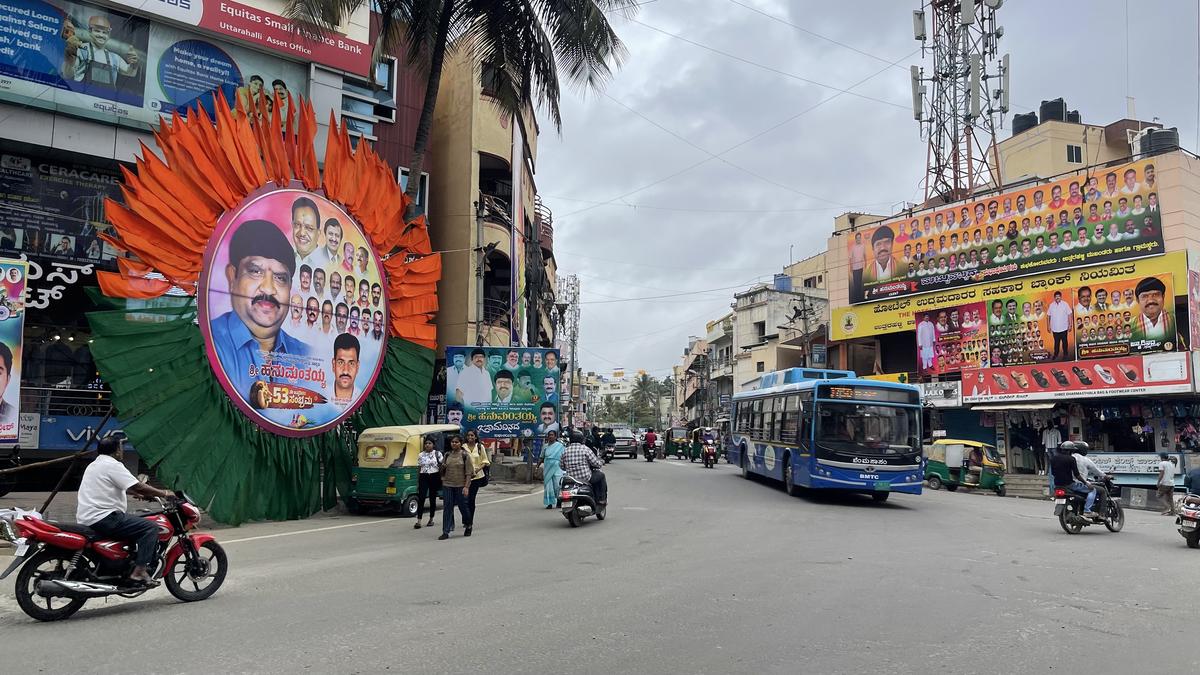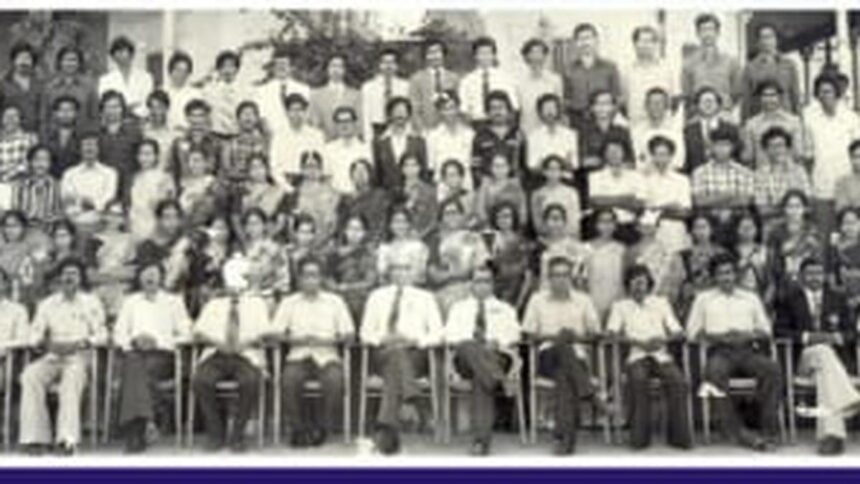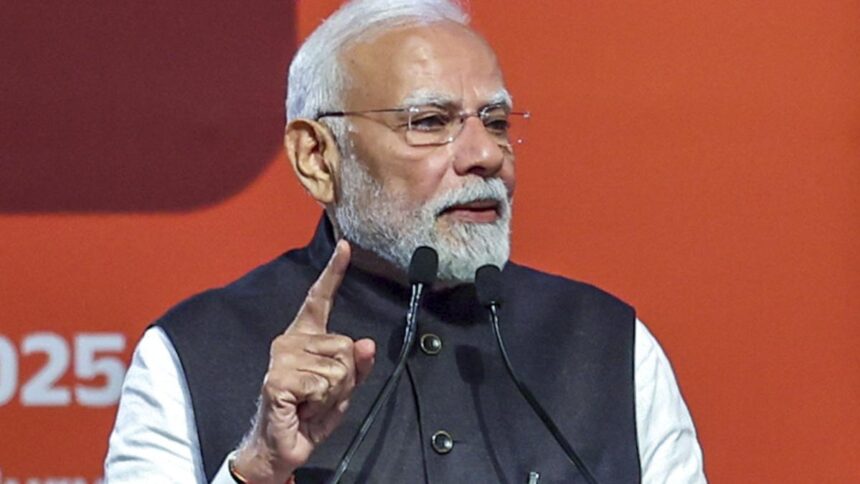
A view of huge flex and banners at Uttarahalli Circle in Bengaluru.
| Photo Credit: K. MURALI KUMAR
Religious sentiments, political rivalry, and weak laws continue to flood Bengaluru with flexes and banners despite a blanket ban, according to the Bruhat Bengaluru Mahanagara Palike (BBMP) and police.
In the past 16 months – in the fiscal year 2024-25 and till date – police have filed 461 FIRs against illegal advertisements, while BBMP has removed 27,207 flexes and collected ₹4.08 lakh in fine, data reviewed by The Hindu shows.
The Mahadevapura Zone tops the list with 113 FIRs under the Karnataka Open Places (Prevention of Disfigurement) Act, 1981, followed by the West Zone with 91, Yelahanka with 69, and the South Zone with 56.
The Karnataka High Court imposed a blanket ban on flexes in 2018. Since then, BBMP has been clearing them and booking offenders. Still, banners pop up during religious events and political occasions.
“Supporters of politicians often put these banners up overnight for birthdays or small events. When questioned, they ask us to first remove the banners of rival politicians,” a BBMP official said. Officials admit the issue is more about competition than necessity. If one politician puts up 100 banners, rivals ensure 101 go up the next day. Such contests are common in the East and West Zones, he said.
Religious programmes are another occasion when the streets are dotted with flex and banners. BBMP receives numerous requests every month for flex permissions. “We allow them out of respect for religious sentiments, warning organisers to remove them within hours of the event. But most don’t comply, and our staff clear them later,” said another officer. With limited manpower, BBMP struggles to match the pace at which banners appear overnight.
Last year, BBMP floated tenders twice to outsource flex removal, but no contractor applied. Officials attribute this to fear of politicians. The civic body is now banking on a project of affixing AI-equipped cameras on official vehicles to track banners in real time.
BBMP points out that politicians are justifying some banners as essential for awareness. For instance, the southern and southeastern parts of the city are dotted with banners about the e-khata drive, tied to poles and trees. The banners remain in place long after the event is over, and even though they technically qualify as advertisements, they are presented as “development awareness” flexes.
Police said the weak law makes enforcement toothless. The law prescribes a fine of less than ₹2,000 and up to six months’ imprisonment, but offenders easily secure bail.
“If someone installs 20 or 30 banners, the fine is the same as for one banner,” said Deputy Commissioner of Police Akshay Hakay Machindra. “Since the banner itself costs more than the fine, they put up more without hesitation,” he said, adding that police often join hands with BBMP to clear banners and sometimes take suo motu cases. “But they keep coming back,” he said.
Amid these concerns, officials are pinning hopes on a writ petition regarding advertisements, currently in the High Court. “If the court pulls up politicians and orders strict action, the city may finally see fewer illegal banners,” a senior police officer said.
Published – August 17, 2025 07:50 pm IST




















